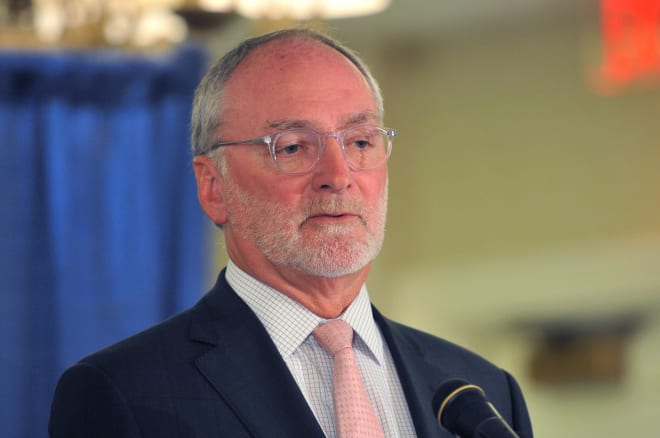An Early NCAA Eligibility Decision To Bring Later Headaches
Notre Dame football beat writer Patrick Engel provided an excellent and comprehensive breakdown a couple of weeks ago for both BlueandGold.com and Blue & Gold Illustrated of exactly what the Irish roster could look like in 2021 after an August decision by the NCAA Division I Board of Directors granted all 2020 fall sports athletes an extra — and essentially free — year of eligibility in 2021.
In the same way the 2020 spring sports athletes were provided this eligibility extension in March after their seasons were canceled or shortened because of the coronavirus pandemic, the NCAA extended the same courtesy to all of its fall student-athletes.
On the surface, this ruling was gracious, and a nice gesture to the thousands of young men and women whose 2020 fall sports schedules have been altered and in some cases don’t provide any national championship opportunity.

But dig a bit deeper, and the roster and financial challenges this decision creates for schools in the longer term make this ruling reckless and bring four years of collateral hardship for athletic programs.
The 2020 football season will remain status quo.
Things get tricky in 2021 when roster management challenges become more pronounced and roster rhythm is disrupted when recruiting classes collide with players already on the team.
For example, if Notre Dame brings in 20 recruits with its 2021 class, those players would join the 17-man haul from 2020 — all 17 of whom now have an extra year to play — which would essentially leave the program with a 37-member freshman class, whose eligibility clocks will then tick on the same timeline.
How can schools, including Notre Dame — that are already slashing staff, salaries and secondary sports programs — absorb the millions of dollars lost each Saturday because of empty or sparsely-filled football stadiums still be expected to fund 10-20 additional scholarships every year for the next four years? Many outside of the lucrative Power 5 Conference schools can’t.
Way more questions than answers remain with an eligibility ruling from the NCAA that was well-intended, but perhaps overreaching and definitely premature as a majority of football programs carry on with their seasons — the Big 10 announced this week it’s going to go live next month.
Also, consider the sweeping roster overhauls coming each of the next four off-seasons with hundreds of graduating players enticed to enter the transfer portal, relocate and play immediately at a new school because they now bring two years of eligibility instead of just one.
The inevitable transfer tsunami created from this NCAA decision will lure top players from lesser programs to the greener pastures of bigger ones and further separate the haves from the have-nots in college football.
Presumably, through traditional attrition, early NFL entrees, a nudge out the door for some players and creative recruiting strategies, programs will ease their number crunch over time.
But for now, providing an extra year of eligibility for student-athletes that, at least in the immediate, carry on as “normal” seems knee-jerked.
If the NCAA wasn’t willing to grant winter sports athletes extra eligibility after already knowing most of the men’s and women’s basketball conference tournaments were scrapped midstream and the NCAA Tournaments were wiped out, why does a fall sport athlete who completes a full season and crowns a national champion be provided this option?
Obviously, this story presumes that 2020 football and other fall sports seasons hold together, and maybe that’s the point.
The extra eligibility ruling by the NCAA was noble and gracious, but to render it in August without knowing how this fall sports season would unfold came too quickly and will leave coaches with difficult roster challenges for the next four years and schools with a heavy financial burden they’re not equipped to handle right now.
The ruling should’ve waited.

• Learn more about our print and digital publication, Blue & Gold Illustrated.
• Watch our videos and subscribe to our YouTube channel
• Sign up for Blue & Gold's news alerts and daily newsletter
• Subscribe to our podcast on iTunes
• Follow us on Twitter: @BGINews, @BGI_LouSomogyi, @Rivals_Singer, @PatrickEngel_, @MasonPlummer_ and @AndrewMentock.
• Like us on Facebook.


